STATE GOVERNMENT
Improve, invest in critical leave program
Paid Family & Medical Leave has improved the health and economic resilience of Washington families
By MARILYN WATKINS
(Feb. 2, 2022) — Washington launched its new Paid Family & Medical Leave program (PFML) in January 2020, just weeks before the first U.S. COVID case was first identified in the state. That timing turned out to be fortuitous. PFML has helped keep Washington families financially afloat, improved health, and relieved stress during the past two tumultuous years.
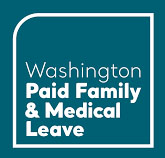 Because of PFML, Washington was better prepared for a pandemic than most states. The program provides benefits for up to 12 weeks – and if people need both medical and family leave for 16 or 18 weeks – to people who need leave from work to welcome a new child, care for a seriously ill family member, for their own serious health condition, or when a family member is deployed overseas by the military.
Because of PFML, Washington was better prepared for a pandemic than most states. The program provides benefits for up to 12 weeks – and if people need both medical and family leave for 16 or 18 weeks – to people who need leave from work to welcome a new child, care for a seriously ill family member, for their own serious health condition, or when a family member is deployed overseas by the military.
In addition to the 1.26 million cases of COVID reported in Washington over the past two years, people have continued to have babies, get cancer, need surgery, and have parents enter end of life care. Being able to take needed time off work without financial stress and have the care of loved ones allows people to recover more quickly from serious illness and injury. Extended time to bond with both parents is extremely beneficial to baby and parents alike. It improves infant health and well-being long term and reduces post-partum depression and other maternal health complications. PFML also helps employers, especially small businesses, by providing valued employees with the support they need at a low and predictable cost. The program has strengthened our communities and economy.

Unlike sick leave, which is generally paid directly by employers and is available for short-term illnesses and preventive care, PFML is administered by the Washington’s Employment Security Department (ESD). Employers and employees both contribute payroll premiums to the trust fund. When workers need the leave, they notify their employers but apply to the state for benefits, so employers don’t have to cover those longer leaves on their own. From the time premium collection started in 2019 through 2021, workers and employers paid in premiums that combined totaled 0.4% of employees’ pay. In 2022, the total premium increased to 0.6% – but first quarter 2022 premiums won’t be submitted by employers until April.
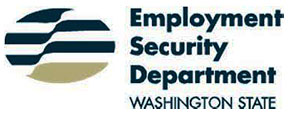 Last week, ESD announced a possible cash flow shortfall in the PFML trust fund during the weeks at the end of the quarter before premiums come in. They initially asked for $82 million from the state General Fund to assure benefits could be paid in a timely manner. Newer projections incorporating the past few week’s data as Omicron has spiked show much more will likely be necessary to keep the fund stable over the next two years.
Last week, ESD announced a possible cash flow shortfall in the PFML trust fund during the weeks at the end of the quarter before premiums come in. They initially asked for $82 million from the state General Fund to assure benefits could be paid in a timely manner. Newer projections incorporating the past few week’s data as Omicron has spiked show much more will likely be necessary to keep the fund stable over the next two years.
This potential cash flow shortfall is the result of extraordinary circumstances. Fortunately, Washington has both federal funds and unallocated state money available that the Legislature can include in this year’s supplemental budget so that paid family and medical leave claims aren’t interrupted.
Washington was only the fifth U.S. state to implement a PFML program in 2017. The four other state-based programs already in effect at that time started with short-term disability programs that were established in the 1940s, then added family leave starting with California in 2004. Washington and most other states don’t have those disability programs, so we were the first to build a program from scratch. With any new program it’s hard to get estimates of usage exactly right. Based on the experience of adding family leave to those disability programs in other states, Washington expected a gradual increase in claims over five years as people learned about the program. But in Washington, extensive outreach conducted by ESD, advocates, and business associations helped spread the word before the program launched, resulting in higher demand than projected from the start. Applications in year one were at about the level anticipated in year three, and have continued to grow from there.
Meanwhile, the unprecedented health emergency, paired with unprecedented job losses of the pandemic, likely affected program use and certainly reduced revenue from premiums.
Other state paid leave programs are in a similar boat of having to make adjustments. California increased PFML premiums 0.2% in 2021, after just one year of pandemic, and the U.S. Treasury has announced states can use federal COVID relief funds to shore up paid leave trust funds.
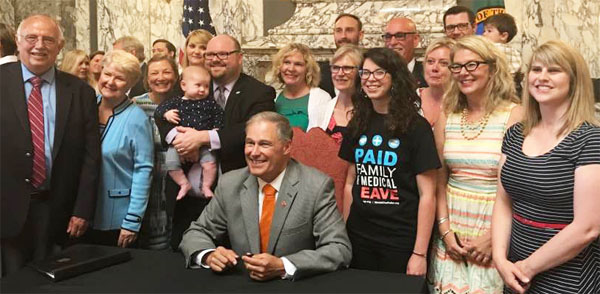
Washington’s PFML program has had broad bipartisan support since its passage in 2017. The policy adopted that year was negotiated by members of the Washington Work & Family Coalition, which had advocated for PFML for years, together with business lobbyists, and a bipartisan group of legislators. The immense popularity of the program has kept bipartisan support high.
Implementation of PFML has had some glitches. Unexpectedly high demand, coupled with the complications of the pandemic, meant delays for people seeking benefits during the program’s first six months. By June of 2020, ESD typically was turning around applications within two weeks, but lengthy telephone hold times made it hard for people to get questions answered through the end of 2021. While materials on the program’s website are available in multiple languages and translation services are available, the online application remains available only in English. Many people find the application process confusing.
These implementation issues are largely the result of the program being short-staffed from the beginning. Unfortunately, access barriers fall hardest on the people who need the program the most. ESD’s 2021 annual report on PFML shows that people making under $16 an hour are least likely to use the program, and that Black, Latinx, and other BIPOC workers use the program at lower rates than White workers.
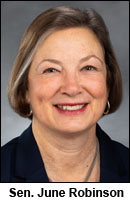 Washington’s Legislature is in the third week of a short 60-day session. In early January, Sen. June Robinson (D-Everett) introduced SB 5649 to make several important improvements to the PFML program. These included allowing people to apply in advance of a known leave, rather than having to wait until after their surgery or baby’s birth when they are exhausted and need to focus on health and family. Knowing their leave is approved in advance is especially important to lower-wage workers who can’t afford to take time off without pay. The bill also allowed approved leaves for family care to continue during the two weeks following a loved one’s death, rather than abruptly ending benefits the day a loved one dies.
Washington’s Legislature is in the third week of a short 60-day session. In early January, Sen. June Robinson (D-Everett) introduced SB 5649 to make several important improvements to the PFML program. These included allowing people to apply in advance of a known leave, rather than having to wait until after their surgery or baby’s birth when they are exhausted and need to focus on health and family. Knowing their leave is approved in advance is especially important to lower-wage workers who can’t afford to take time off without pay. The bill also allowed approved leaves for family care to continue during the two weeks following a loved one’s death, rather than abruptly ending benefits the day a loved one dies.
Despite strong support from community members and business representatives at the bill hearing on Jan. 13, the news of a potential shortfall in the PFML trust fund the following week derailed bipartisan support for the original bill. The Senate Labor, Commerce, and Tribal Affairs Committee amended the bill to remove advance applications because it would require additional staffing. The committee also pared down leave following a family member’s death to be available only to new parents and for just seven days. Finally, the committee added an actuarial study and a task force to make recommendations on long-term program solvency.
The changes to SB 5649 that assure long-range fund stability are important, but Washington’s Legislature and ESD also need to prioritize removing barriers to equitable access for the working people and families who have been hit hardest by the pandemic – including the common sense and compassionate provisions of the original bill.
So what’s next? Washingtonians love PFML, and legislators know it. SB 5649 is headed to the Senate Ways & Means Committee, then will have to be approved by the full Senate and make its way through the House. Further amendments are possible at any stage. The Legislature will also adopt a supplemental budget before adjourning on March 10. Chances are that budget will contain funds to assure PFML fund solvency and provide for actuarial and other analysis of the program. The amount authorized will depend on the latest data available at the time.
Washington’s paid family and medical leave program has improved the health and economic resilience of Washington families and communities through two very challenging years. It is a model for the country, and with smart and compassionate improvements, it will remain so. The state has funds available from both state revenues and one-time federal COVID relief dollars to both keep PFML strong and make additional investments our people and communities need to thrive.
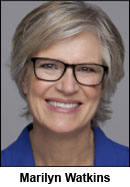 Marilyn Watkins is Policy Director for the Economic Opportunity Institute. The EOI’s mission is to build an economy that works for everyone by advancing public policies that promote educational opportunity, good jobs, healthy families and workplaces, and a dignified retirement for all. (This column originally appeared at the EOI website and is crossposted here with the author’s permission.)
Marilyn Watkins is Policy Director for the Economic Opportunity Institute. The EOI’s mission is to build an economy that works for everyone by advancing public policies that promote educational opportunity, good jobs, healthy families and workplaces, and a dignified retirement for all. (This column originally appeared at the EOI website and is crossposted here with the author’s permission.)





